In response to
a
recent rant from Lefsetz about how great vinyl is:
back to main turd
Rate of change phenomena directly and physically translated from
mechanical/electro-mechanical media is limited to asperities in the
media which will change and vary as per Archard equation:
http://en.wikipedia.org/wiki/Archard_equation
I too loved the romance of the ol' 24 tracks - here's a pic of my
kid (a year old at the time) sitting in front of a 2" 16/24track A-80
Studer, yep, just like the ones that recorded all that "good ol' vinyl"
you guys seem to love so much:
http://www.ajawamnet.com/ajawamnet/page3/page3.htm
Man, I loved the smell of the tape, big ass 2" reels, 3M 250, Ampex
406/456. Big ass servo's moving an 8 pound reel...
BUTTTT - Do any of you know how fucked up that shit was?
Really? I recall a story of how a well known producer took a tape
into Mastersound and then realized the 10K alignment tone was wavering
'cause he left his master next to his bookshelf speakers....
Ain't just me - see Jack Endino's page titled "The Unpredictable Joys of
Analog Recording" http://endino.com/graphs/index.html (Jack's
the guy that did a lot of the early Seattle stuff including Nirvana's
Bleach ).
From that page: "To me, analog is unpredictable; it does
that funny
thing to the bottom end. You work really hard on the bottom to get it
exactly right, and then you play it back on your analog tape, and it's
like, 'Oh, what happened there?' The storage medium is making decisions
about what the bottom end should sound like." ~Bob Clearmountain
I also repaired all those, "good ol" tape decks. Isoloop 3M 59/79's,
JH-24 MCI's that had so many issues with the discrete CMOS transport
logic (JH110 transports), did tons of work on Ampex MM-1100/1200's with
their funky head loading issues, Otari's (MX80's to non-capstan
MTR90's) and everything in between. Setting bias on a Scully 1" was a
nightmare if it was older than a year or so - electrolytic caps go to
la-la land. You'd never get all the channels to sound the same.
And every Studer known to man... in fact, to set up new brakes on an
A-80, one had to flood the hubs with Acetone, then run the units WITH
THE BRAKES ON (you pulled the brake solenoid) until it started to smoke
slightly - then and only then were the new brake bands broken in...
otherwise you'd spill $200/reel 2" tape on the floor next the bass
player's cumshot from him fucking some groupie the night before
(actually had to fix an Amek 2500 console that happened to before a
session with Blue's Travelers at Mulberry Street Recorders).
And what I find the most ridiculous
is that the recordings most loved by all these turntable people -
Steely Dan - in which the audio engineer, Roger Nichols (see here - http://www.ajawamnet.com/ajawamnet/a_definite_non_turd_Roger_Nichols.html ) won multiple Grammy Awards for Engineering HATED vinyl.
See his rant here
Most
people have no clue as to how fucked up even the best of the
best was back then with regards to signal integrity. How many
people actually know how to set the volts per division and
triggering on
an analog oscilloscope? Especially an old 500 series Tek that was as
big as a
stove?
Geeez....
As to the "wow - vinyl" here's a bit of info - it actually sucks... ya
know why?
OK... How's about linear tracking vs
tangential error? How's a record
cut - Pivotal or radial? What effects does it have as the stylus
moves towards the center of the record?
You can't track a stereo groove exactly the way a cutter,
such as the ol' Neumann lathe/Telefunken cutter actually cut the
grooves
Neumann Cutting Lathe:

Note that the cutter head is moving tangent to the disk.
And here's some specs on a typical cutter head.
What? only rated to 15KHz? Probably one of the reasons for half-speed
mastering...
So what does this mean? The best way to understand it is to read the book from Larry Boden. It's called BASIC DISC MASTERING
Larry was the phonodisk mastering engineer for many a famous record. Years ago he wrote a book on it.
You should be able to find a PDF of it here:
https://archive.org/details/BasicDiscMasteringLarryBoden600dpi
Note the comment here where Larry mentions he considers it "public domain":
https://www.lathetrolls.com/viewtopic.php?p=9878#p9878
So in that book it shows how stereo information is encoded in the record groove using the Westrex 45/45 system:
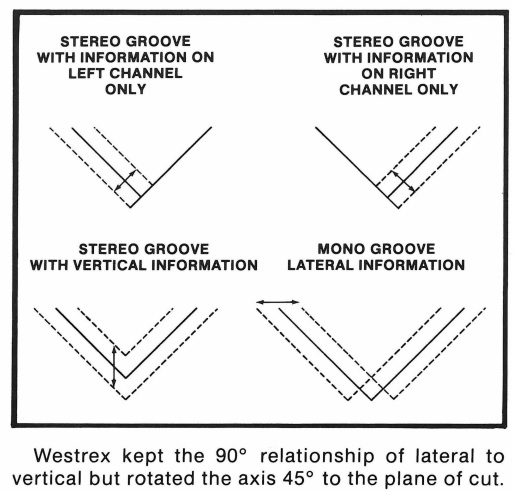
So left channel information is encoded on the left groove wall; the right on the right wall. Simple, huh?
YEA... WHEN THE RECORD IS TRACKED AS IT WAS WHEN CUT - LINEARLY
But
typical tonearms DO NOT track in a linear fashion - they pivot.
This causes tangential error in the way the playback needle
addresses the groove wall.
This makes things increasingly suck as the record groove goes toward the center of the disc; here's a graphic:
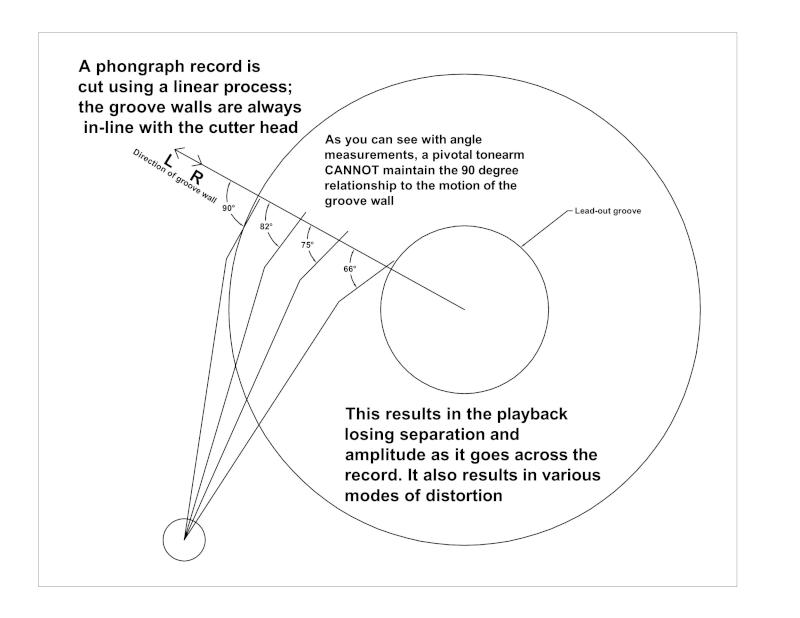
Note that the original cutter head moved in a radial direction that was 90 degree to the tangent of the spinning disc master.
Now
there were pivotal tonearms that use a sort of bell crank arm to adjust
the tangent of the stylus as it goes across the groove
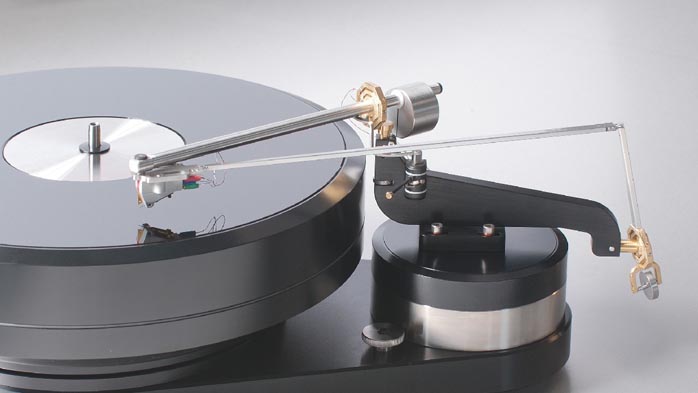
but
this can seriously degrade the compliance of the arm, since it
increases mass which increases inertia, and the bearings of the pivot
add to the drag of the entire tonearm assembly.
There's also
radial tracking turntables
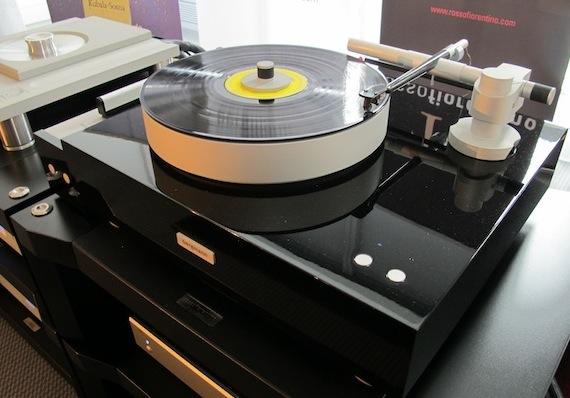
which attempt to mimic the
perpendicular, radial path the groove cutting head used.
But these too add some sort of drag.
Note
that any drag - in either a standard pivotal, tangent-correction
pivotal, or passive radial tonearm results in the unbalanced stylus
pressure in the groove.
This results in the stylus riding up the outer side of the groove. Not cool.
They also have tried using motorized
mechanism to try and follow the groove pitch. But with the
advent of Stereo Microgroove LP's in the mid-1900's (by both Columbia and RCA), variable pitch
was implemented (see the section below) that accounted for passage with increased bass.
Since bass usually consists of in-phase, monophonic information
- as shown in the Westrex image above - in-phase
mono
signals make the groove cut laterally. So a large, high
amplitude in-phase mono signal makes the grooves have larger
lateral motion.
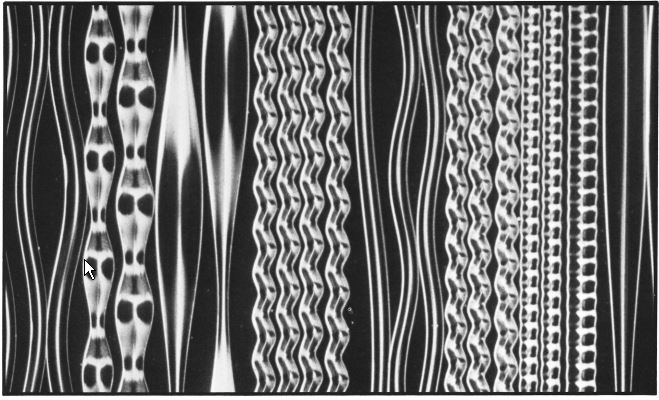
So in order to try and compensate for this phenomena, RCA and
Columbia finally agreed on an equalization curve that, upon groove
cutting, would "roll off" the bass and "boost" the high frequencies
using a "tilt-style" EQ. See below.

Now
this presents a problem in the fact that the "RIAA" eq curve in the
playback gear must match the one used by the various disc mastering
labs. These rarely match, and result in either an increase in bass or
treble. This is most probably the reason you hear the term "warmer"
when people refer to how "superior" vinyl is.
It's just a
wrong playback curve resulting in a bass boost. You could get a
:warmer: sound out of any format by just boosting the bass tone
control. Geez..
This allows the grooves to be packed tighter than if an equal amplitude over the frequency band was used.
But
it's still not enough. To even further increase the playing time
of each side, records are cut using a "look ahead" method that
previews the audio before the cutting head receives it. A typical
Studer; note the convoluted tape path and the two separated play back
heads (click for vid) :
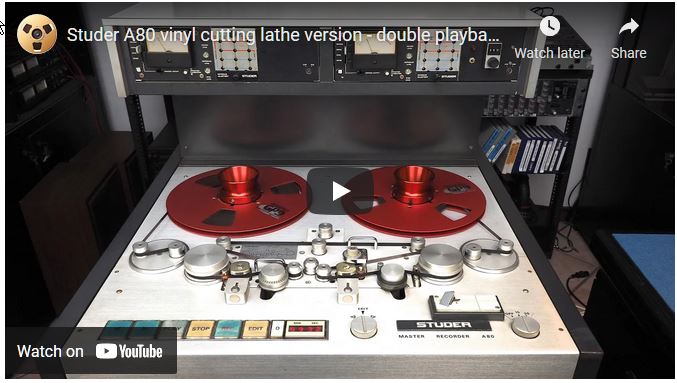
Another issue is the phase angle of the left/right audio
information and the way the groove walls are formed with regard to
phase information. As shown - again in the Larry Boden disc mastering
bible - in addition to the discrete left/right movement, (again, in reference to a perfect
radial cut) any information that's out-of-phase will increase
the vertical groove motion. This results in "lift out" and causes skips.
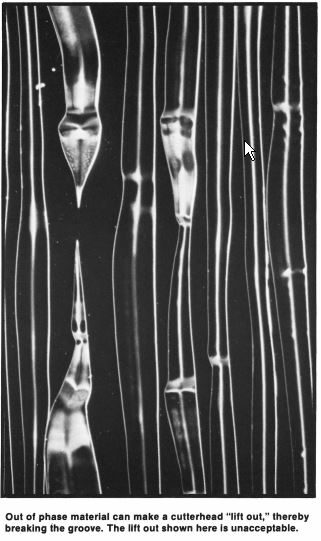
I recently remixed "Whole Lotta of Love" by Led Zep ( http://www.ajawamnet.com/ajawamnet/remixoflz.html
) and I recall that the originally pressings played by the head
of the record label "skipped" due to this. It was obvious when I
remixed it since you can see the out of phase info in the drum tracks
using a Lissajous scope.

The type of signal shown in figure H was present in many passages of the drum tracks
Add to all this shit, the ever changing circumference of the groove as
it spirals toward the center, and you get a system that was cool for
the early to mid /late 1900's, but no so much for the higher definition
playback systems and the progress in downstream transducers (ie.
speakers/headphones). This is called peripheral groove speed. These diameter losses manifest it:
1. Cutting losses
2. Tracing losses
3. Deformation losses
Again, I refer to the Larry Boden book (page 30)
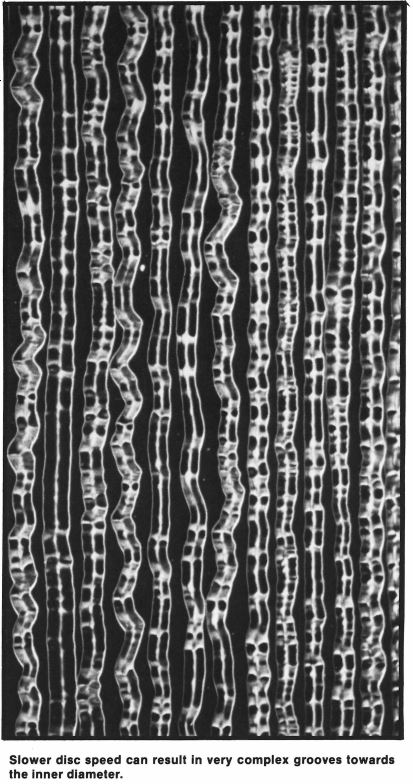
OK - I'll answer another question from the end of this rant - You
CANNOT play a record again within 17 hours after a stylus passes over
it. Why? The extreme forces of that little elliptical or conical
diamond stylus, due to the small surface area of contact, exerts
extreme pressures (even at one gram tracking force) and destroys the
high frequency info in the grooves - the plasticizers in the vinyl
(pure vinyl is brittle) compress to a point that an immediate replay of
the record just lops off the hi freq grooves...see the first paragraph
of this rant...
Dust on the record? Naw man, that's all the cymbals going
bye-bye...that grey dust is actually part of the groove....
I will say that other studies (esp those done by the Last Co.) show
more damage is caused by conchoidal fractures than replay. But other
studies have shown that as the point of contact goes "plastic" further
stress can exacerbate fracturing.
OK... as a kid I worked at Opus One in Pittsburgh - Tasso (the owner)
actually built George Benson's first guitar amp (actually one of his
techs did out of an old KLH amp)
I remember getting a hi-end audio system on the service lift that
claimed it picked up Radio Moscow on the left channel... I went
upstairs to the sales guy with a "What the fuck..." question. Didn't
even get that far, Phil, the sales guy, said the customer ran the
electron microscope at CMU and had a Ph.D. EE.
So I go to the guy's house, he's using a top of the line Thorens, with
a Linn tone arm and Supex MC cartridge - turns out the
ground system
for his DX long wire antenna was inducing RF into the phono preamp.
To get a phonograph to play even close to what happened on the master
tape or even the mastering lathe, required such care that it was
insane....
OK, I sent this before and I really hope you ACTUALLY post it this time:
Seriously, anyone here that's really
into vinyl know how to set
antiskate? How do you really do it correctly? It's effects on channel
balance?
OK... I
just did a Google to see forum results for Rega,
antiskate (with all the spelling variations).
Wow - only
a few of them that I saw (I realize I didn't do
an exhaustive search) failed to talk about the true way to set
antiskate.
You see, on any
pivotal tonearm, there is a tendency for the tonearm to be pulled
towards the center of the turntable. Back in the day the typical
consumer turntable had a dial with a spring to counter this force. The
dial had a scale that typical consumers would use to set anti-skate
depending on the tracking force; there were all kindsa rec's on how to
set it - not any of them were correct.
In fact, the way
you really set antiskate, it to get a special test disk - No, not
the fancy pants one I saw on all these forums.
A
blank (no groove) disc. Blank. Totally. Just a flat fucking vinyl
polymer disc. Just like a record but no groove.
Now put
that on your
Rega- bop thingy. Place the tone arm on the 33-1/3 or 45 RPM spinning
blank disk with what you THOUGHT
was the correct antiskate.
Watch what
happens - you may want to be awake, really
awake for this.
As the tonearm starts skating inward or outward (depending upon how
fucked
the antiskate you thought was right ACTUALLY is), you may want to be
ready to keep it from destroying your pinky-pinky stylus as it either
slams into the label area or whizzes past and falls off of the
needle drop area.
Yep - back in
the day, that's how we set it... back in 1975 - back when that, 8
tracks, cassettes were king. Lovely...
Here's a vid - http://www.youtube.com/watch?v=SymDqAn3Se4
How long does the average stylus
suspension really last? What are
plasticizers and how does it effect a phono cartridge?
Speaking of plasticizers, how does the
variance in these chemical
compounds affect hi frequencies and groove life?
How many people here know how long it
takes the typical vinyl
formulation to recover after a stylus passes over it?
How's 'bout MC vs MM and inertial
differences? What's a Supex? What's
the diff?
OK... how's bout phase shift due to
poor RIAA preamps? Anyone
here know the diff? Anyone here know why there even is an RIAA curve?
How's 'bout when the electrolytic coupling caps dry out? What happens
then? How is the average shelf life of an electro rated?
How does L/R phase effect
cutter/Stylus motion? How is stereo cut into
a groove? What is the effect on channel separation?
Anyone here actually used a Fairchild
limiter on a Neuman/Tele
lathe/cutter?
What is the effect of the diminishing circumference as the groove
approaches the center of the disk?
OK... Anyone here tell me what famous
turntable used to use gymbal
suspension and could actually play upside down?
OK.... anyone here actually uses a
Lissajous display to actually
observe LF modulation characteristics of the various drive technologies
(belt vs puck vs direct drive)?
Some great stuff on vinyl here - http://www.micrographia.com/projec/projapps/viny/viny0000.htm
... love the
silverfish turds
back to main turd









